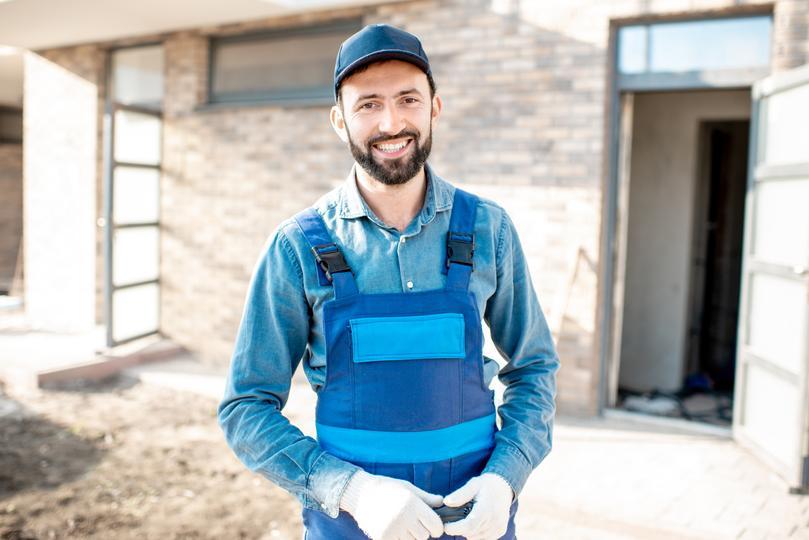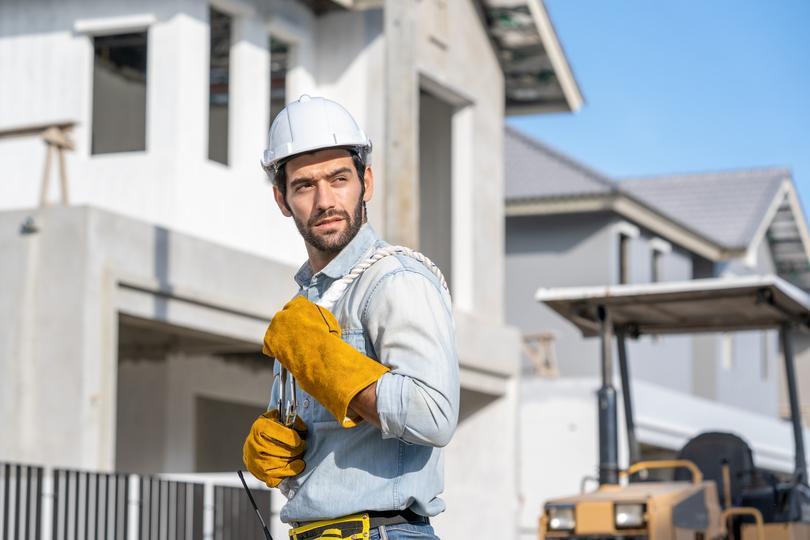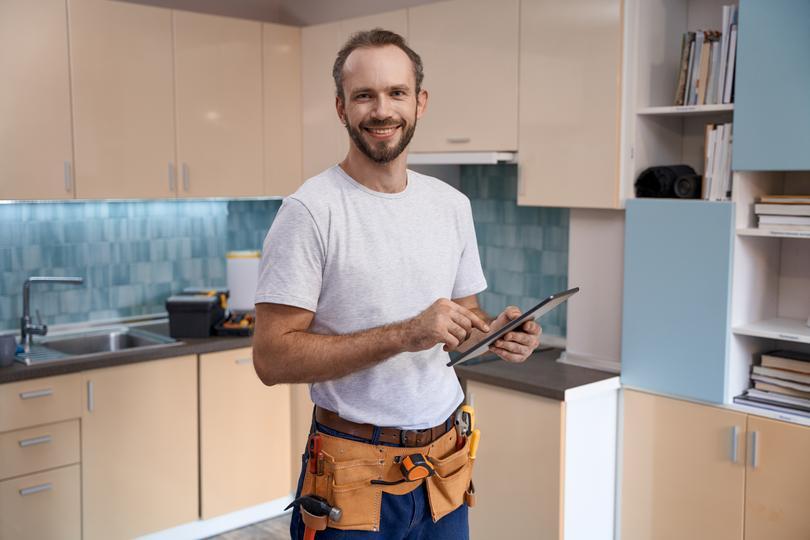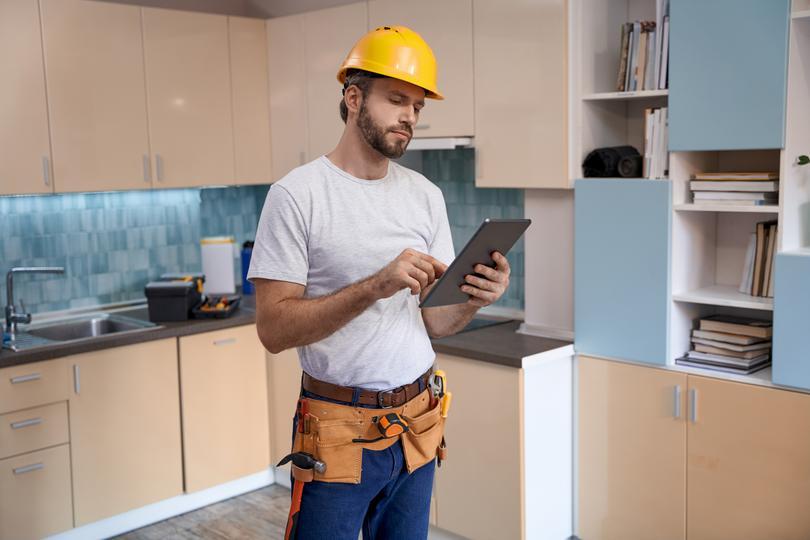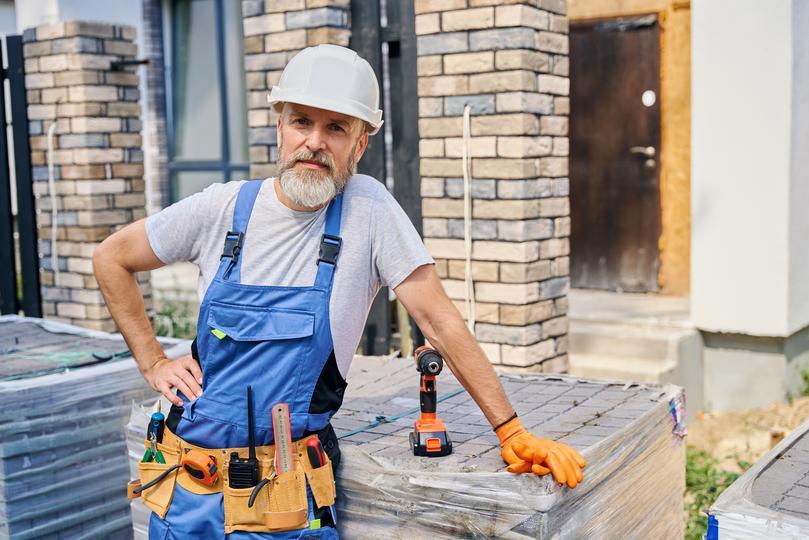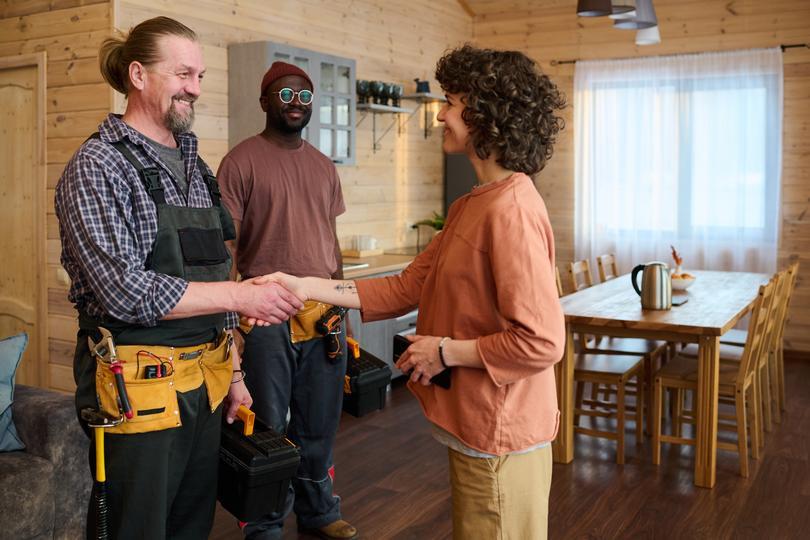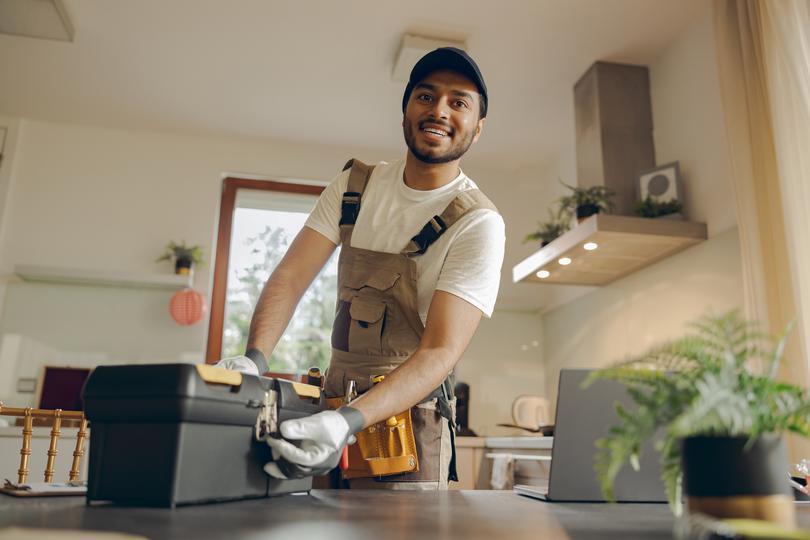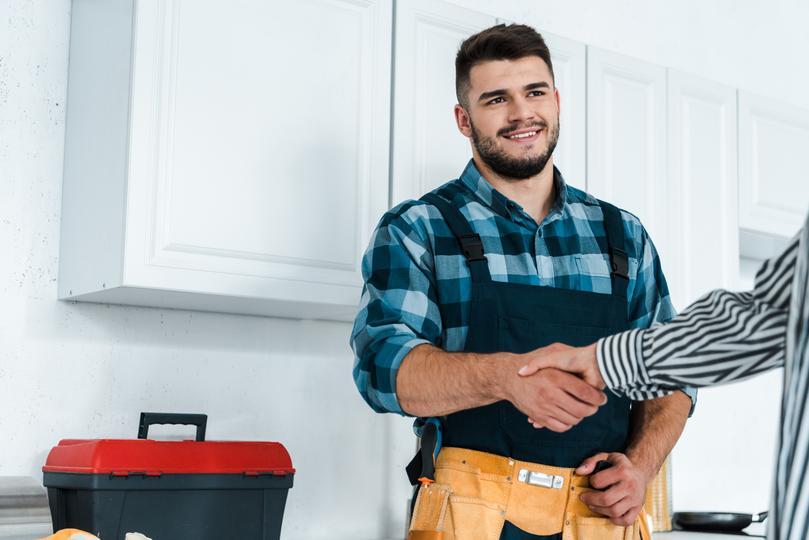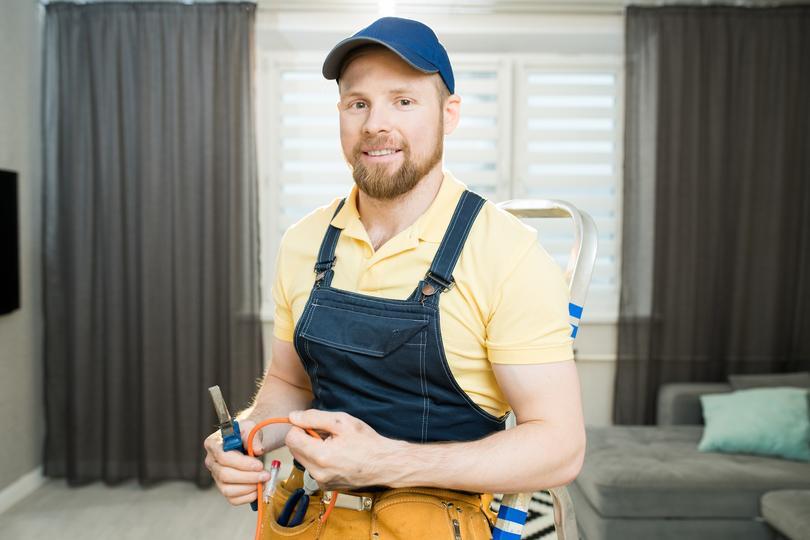Enhance Your Home's Efficiency with Sustainable Insulation - Get No-Obligation Quotes Today!
Discover the Best in Eco-Friendly Insulation Services
Revitalize your living space with top-rated eco-friendly insulation services. Compare quotes and secure free estimates to improve your home's energy efficiency and comfort.

Featured In
Start Your Eco-Friendly Upgrade
Utilize Remodelyng.com to easily compare and find the best eco-friendly insulation services, tailored to fit your unique needs and preferences.
How it works?
Our process guarrantees that you always get afair and competitive quote. Say goodbye to overbilling!

- Submit an Enquiry Describing Your Project
- Begin by submitting an enquiry for your Eco-Friendly Insulation needs on Remodelyng.com, ensuring that all relevant project specifics are covered to match you accurately with skilled contractors.
- Experts Match You With Qualified Contractors
- Our Remodelyng.com specialists will assess your project details and then invite the most reputable contractors, who have a proven track record of success on Eco-Friendly Insulation projects, to submit a competitive quote for your consideration.
- Contractors Offer Their Best Quotes
- Selected pros, aware of the competition and keen to win your business, will put forward fair and competitive offers, ensuring you get the best value for your Eco-Friendly Insulation project.
- Review, Compare, and Choose
- You'll receive these quotes along with access to the contractors' profiles, including reviews, insurance details, and license information. This comprehensive data allows you to make an informed decision, picking the contractor that best fits your project's requirements and budget, based on factual evidence rather than intuition.
Why Choose Remodelyng.com?
At Remodelyng.com, we're committed to making your Eco-Friendly Insulation journey seamless and rsik-free. From the first click to the completion of your project, our team is here to support you every step of the way.

- No Cost, No Obligation
- Submitting a project request on Remodelyng.com is absolutely free, and you're under no obligation to proceed. We understand the importance of exploring your options before making a decision.
- Multiple Quotes
- Receive up to 3 competitive quotes from our network of highly-skilled pros. We make it easy for you to compare options and ensure you're getting the best deal for your project.
- Best Price Guarantee
- Our platform is designed to help you always find the best price for essential home improvements. With a wide range of contractors, you're sure to get a great deal for high-quality work.
- Quality and Trust
- Choose from a selection of top-rated professionals vetted for quality and reliability. Our rigorous selection process ensures that you're matched with the best contractors who have a proven track record of success.
- Comprehensive Services
- From initial consultation to the final touches, Remodelyng.com offers a wide range of services to cover all aspects of your remodeling project. Whether it's a kitchen upgrade, bathroom renovation, or a full home remodel, we have the expertise to support your vision.
- Instant Booking & Convenience
- With Remodelyng.com, you can book your project instantly online. No more waiting for callbacks or dealing with multiple contractors. Our streamlined process saves you time and hassle, making home improvement projects as straightforward as possible.
Eco-Friendly Insulation Installation Checklists
Navigate the process of upgrading your home with eco-friendly insulation through our comprehensive checklists, designed to support you at every stage, ensuring a seamless and sustainable improvement.
Step 1
Planning Your Eco-Friendly Insulation Upgrade
How Do I Start Planning My Insulation Upgrade?
Initiating your insulation upgrade begins with meticulous planning and a focus on sustainability. Here’s how to ensure a thoughtful approach.
- Defining Insulation Goals
- Identify your main goals for upgrading insulation—whether it’s improving energy efficiency, enhancing comfort, or reducing your carbon footprint.
- Budgeting Effectively
- Create a realistic budget that accounts for quality materials, professional installation, and any potential incentives or rebates for eco-friendly choices.
- Researching Insulation Types
- Explore different types of eco-friendly insulation materials, such as cellulose, wool, or spray foam, and their benefits and applicability to your home.
- Assessing Your Home's Needs
- Evaluate your home’s current insulation effectiveness and areas for improvement by conducting or scheduling an energy audit.
- Considering Local Climate
- Factor in your local climate and how it affects insulation needs and choices to ensure optimal thermal comfort and energy savings.
- Exploring Incentives
- Investigate government incentives, rebates, or tax credits available for eco-friendly home improvements to maximize your budget.
- Choosing Sustainable Materials
- Prioritize insulation materials that are not only effective but also sourced sustainably and have a low environmental impact.
- Planning for Ventilation
- Ensure that your insulation upgrade includes a plan for maintaining or improving home ventilation for indoor air quality.
- Selecting a Qualified Contractor
- Start looking for reputable contractors who specialize in eco-friendly insulation projects and have a track record of successful installations.
- Scheduling Consultations
- Arrange consultations with potential contractors to discuss your project, get estimates, and understand their approach to sustainable insulation.
Step 2
Selecting the Right Contractor for Eco-Friendly Insulation
How Do I Choose the Best Contractor for My Insulation Project?
Choosing the right contractor is crucial for an eco-friendly insulation project. Follow these steps to ensure a perfect match.
- Verifying Credentials and Experience
- Look for contractors with specific experience in eco-friendly insulation, and verify their credentials, certifications, and insurance coverage.
- Checking Past Projects and References
- Review the contractor’s portfolio of previous insulation projects and request references to assess their quality of work and customer satisfaction.
- Understanding Their Approach to Sustainability
- Discuss the contractor’s approach to sustainability, including their choice of materials and methods, to align with your eco-friendly goals.
- Comparing Quotes and Materials
- Get detailed quotes from multiple contractors, comparing not just the cost but also the types of materials proposed and their environmental impact.
- Evaluating Communication and Customer Service
- Ensure clear and responsive communication with the contractor, as this will be key to a successful project and any future service needs.
- Reviewing Contracts Thoroughly
- Examine all contract details, including scope of work, timelines, costs, and warranties, to ensure everything is in order and meets your expectations.
- Discussing Project Timeline and Disruptions
- Talk about the expected project duration and any potential disruptions to your daily life, ensuring the contractor can work within your schedule.
- Clarifying Aftercare and Maintenance
- Understand what aftercare is provided, including maintenance tips and how to address any issues that may arise after the installation.
- Finalizing Your Selection
- Once you’re satisfied with a contractor’s expertise, sustainability practices, and project plan, proceed to finalize your agreement.
- Preparing for Installation Day
- Coordinate with your contractor to prepare your home for installation day, including clearing necessary spaces and establishing work areas.
Step 3
Pre-Installation Preparation for Eco-Friendly Insulation
What Should I Do to Prepare for Insulation Installation?
Effective preparation is key to a smooth insulation installation. Here’s your pre-installation checklist.
- Confirming Insulation Details
- Review and confirm all details of the insulation materials and installation plan with your contractor to ensure alignment with your goals.
- Securing Necessary Permits
- Ensure that all required permits for the insulation upgrade have been obtained to comply with local building codes and regulations.
- Preparing the Installation Area
- Clear the attic, walls, or other areas receiving insulation of personal belongings and debris to facilitate easy access and installation.
- Discussing Safety Protocols
- Talk to your contractor about safety measures during installation, especially if you plan to stay at home during the upgrade.
- Arranging for Pets and Children
- Make arrangements for pets and children to ensure their safety and minimize stress during the installation process.
- Planning for Ventilation Adjustments
- Discuss any necessary adjustments to your home’s ventilation system with your contractor to ensure proper air flow after insulation is installed.
- Notifying Neighbors
- Inform neighbors about the upcoming project, especially if it involves exterior work or may cause noise.
- Setting Up a Communication Plan
- Establish a clear communication plan with your contractor for updates and questions during the installation process.
- Reviewing the Final Checklist
- Go over a final checklist with your contractor to ensure all preparations are complete and you’re ready for the installation to begin.
- Ensuring Access for Contractors
- Make sure contractors have clear access to your home and the installation site, including parking and entry paths.
Step 4
Post-Installation Checklist for Eco-Friendly Insulation
How Do I Conclude My Insulation Project?
After the installation of your eco-friendly insulation, these steps will help you wrap up the project effectively.
- Conducting a Final Inspection
- Walk through the installation with your contractor to ensure the insulation is properly installed and meets all project specifications.
- Reviewing Maintenance and Care
- Discuss maintenance and care for your new insulation to maintain its effectiveness and longevity.
- Collecting Documentation
- Gather all project documentation, including warranties, invoices, and any product literature for your records.
- Understanding Warranty Coverage
- Ensure you understand the warranty coverage for the insulation materials and installation work.
- Scheduling a Follow-Up
- If applicable, schedule a follow-up visit or energy audit to assess the effectiveness of the insulation and any impact on your energy consumption.
- Providing Feedback
- Provide feedback or a review for your contractor to acknowledge their work and help others in their selection process.
- Updating Home Insurance
- Consider updating your home insurance to reflect the added value and improvements made through eco-friendly insulation.
- Monitoring Energy Savings
- Keep track of your energy bills to monitor the savings and effectiveness of your new insulation over time.
- Celebrating Your Green Upgrade
- Acknowledge the completion of your eco-friendly project and enjoy the comfort and savings it brings to your home.
- Planning Future Eco-Friendly Projects
- Reflect on the success of your insulation project to inspire future eco-friendly home improvements.
Find a Eco-Friendly Insulation Contractor Near You
Our professional Eco-Friendly Insulation Contractors operate throughout the country.
Eco-Friendly Insulation Gallery
Need Some Inspiration?
Explore our carefully curated gallery featuring trendy and stylish Eco-Friendly Insulation ideas, designed to inspire and guide your renovation choices.
How much does Eco-Friendly Insulation costs?
More than a marketplace
We Are Your Closest Ally
Our hand-picked 5-stars pros are absolutely determined to make a Eco-Friendly Insulation project succeed. Our only question, will it be yours?
Top services from reliable companies
More Renovation Services
Remodelyng.com exists to connect you to the right remodeling contractor, first time and every time, whatever the remodeling project.
Looking for a reliable Eco-Friendly Insulation contractor?
Get your project done right the first time!
No Eco-Friendly Insulation job is too big or too small.
We will send you up to 3 fair and competitive quotes!
Have more questions? We can help.
Have a different question and can’t find the answer you’re looking for?
Reach out to our team by sending us an email and we’ll get back to you ASAP.
What is eco-friendly insulation?
Eco-friendly insulation refers to insulation materials that prioritize sustainability, minimizing environmental impact. These materials often have the following characteristics:
What are the benefits of eco-friendly insulation?
Choosing eco-friendly insulation offers numerous advantages:
What are the different types of eco-friendly insulation?
The market offers several excellent eco-friendly insulation choices, including:
How do I choose the right type of eco-friendly insulation?
Selecting the best eco-friendly insulation involves considering the following factors: A knowledgeable insulation contractor can help you assess your home's needs and recommend the optimal solution.
Is eco-friendly insulation more expensive?
Some eco-friendly insulation options can be slightly more expensive initially than traditional fiberglass batts. However, several factors make them a worthwhile investment:
How do I find an eco-friendly insulation contractor?
Finding a contractor specializing in eco-friendly insulation involves a bit of targeted searching. Look for: Start your search on Remodelyng.com to find qualified eco-friendly insulation specialists in your area.
Can I install eco-friendly insulation myself?
The feasibility of DIY eco-friendly insulation depends on the type of insulation and the scope of your project. Consider: Hiring a qualified insulation contractor often ensures proper installation, maximizes energy efficiency, and avoids potential safety hazards.
How does proper insulation improve a home's energy efficiency?
Insulation plays a crucial role in energy efficiency by:
What are the signs I need better insulation?
Here are some telltale signs that indicate it's time to upgrade your insulation:
What R-value do I need for my home?
The recommended R-value for insulation depends on your location's climate zone and the area you're insulating. Here's a general guideline: Consult with an insulation professional or refer to energy efficiency resources like the [ENERGY STAR website](https://www.energystar.gov/) for specific recommendations based on your location.
Where to find good eco-friendly insulation contractors?
Find reliable professionals to install eco-friendly insulation using these resources:
What are the best eco-friendly insulation contractors near me?
The 'best' contractor for you depends on your specific needs. Prioritize those who: Start your search on Remodelyng.com to find top-rated eco-friendly insulation experts in your area.
